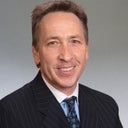A plastic surgeon cannot predict exactly how much fat will survive. It varys from patient to patient and area to area. Fat requires some kind of scaffolding in order to survive, so more hollow areas will likely require more fat, and may have less survival rate than areas with more fulness. If a physician is new to fat grafting, and especially if they are not confident about their instrumentation and technique, then they may tend to over-graft thinking that a large amount of the fat probably will not survive. However if a large amount of that grafted fat does survive, the patient is left with an unnatural and sometimes bizarre look. Another part of the problem can be the physician's aesthetic vision and understanding of facial aging. There are facial areas where adding volume restores a more youthful appearance, but others where adding volume creates a distinctly unnatural appearance. Balance and overall facial harmony is important as well - for example, overfilling the jawline and lower face will create a heavy, square-jawed, masculine appearance. Look for many before and after photos to find a plastic surgeon who is very experienced and who shares your aesthetic sensibilities.

